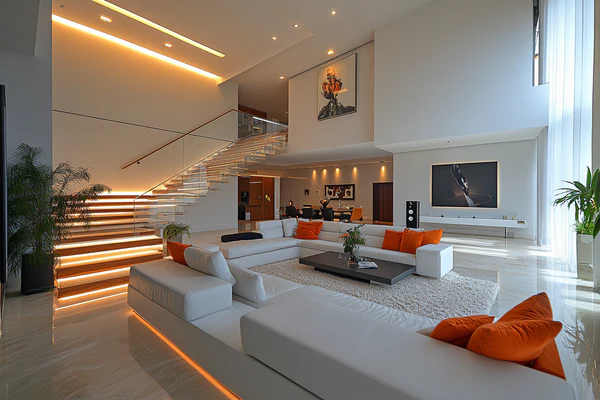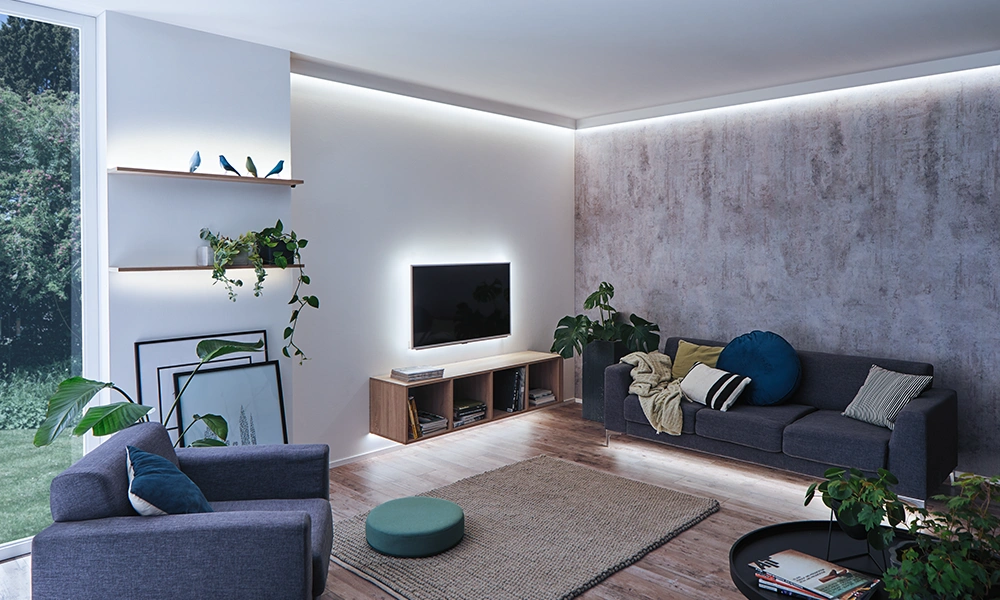Lighting is more than just a way to brighten a room—it’s the silent architect of atmosphere. The right lighting can turn a cold space into a warm retreat, enhance focus in a workspace, or add drama to an otherwise neutral setting. It has the power to evoke emotion, influence perception, and define the character of a room. Yet, achieving the perfect lighting isn’t just about choosing beautiful fixtures; it’s about layering light to create depth, balance, and mood.
A single overhead light rarely does a space justice. Without layers, rooms can feel flat, overly bright, or uninviting. Layered lighting transforms interiors by combining different sources of light—each with its own purpose—to create ambiance, functionality, and depth. Whether it’s a dimly lit living room for movie nights, a bright and efficient kitchen workspace, or a softly illuminated bedroom for relaxation, layered lighting ensures that a space serves multiple needs while always feeling inviting.
Every space should have the ability to shift in mood depending on the occasion. Bright, cool lighting fosters alertness, making it ideal for offices and kitchens, while warm, dim lighting induces relaxation, perfect for living rooms and bedrooms. By strategically layering ambient, task, and accent lighting, you can tailor a space’s emotional tone while ensuring practical functionality.
How Light Affects Mood, Perception, and Energy
Lighting has a direct impact on mood, energy levels, and even circadian rhythms. Bright, cool-toned lights enhance focus and productivity, while soft, warm lights signal relaxation. Poor lighting can cause fatigue, stress, and discomfort, while well-layered lighting fosters well-being and positive emotions.
Understanding the Basics of Layered Lighting
Layered lighting is the strategic use of multiple light sources to create a well-balanced space. Instead of relying on a single fixture, it blends different types of lighting to add dimension, focus, and flexibility. The three main types of lighting that form a complete layer are:
- Ambient lighting – The base layer that provides general illumination.
- Task lighting – Focused light for specific activities like reading, cooking, or working.
- Accent lighting – Decorative or directional lighting that adds drama and highlights focal points.
What is Ambient Lighting and Why Does it Matter?
Ambient lighting is the base layer of illumination in a room, ensuring even brightness without harshness. It prevents a space from feeling gloomy or overly stark while serving as a foundation for additional lighting layers. To avoid harsh, clinical lighting, opt for fixtures that diffuse light rather than direct it sharply. Consider:
- Recessed ceiling lights with dimmers
- Large pendant lights with frosted glass shades
- Indirect lighting solutions like cove lighting
Ambient lighting can come from a variety of sources, including:

- Chandeliers for elegance and general illumination
- Flush mount and semi-flush ceiling lights for even brightness
- Recessed lighting for a modern, unobtrusive glow
What is Task Lighting and Where Do You Need It Most?
Task lighting provides focused illumination for specific activities such as reading, cooking, and working. It eliminates shadows and ensures that workspaces remain well-lit and functional.
Kitchen Task Lighting:
- Under-cabinet lighting illuminates countertops, reducing shadows.
- Pendant lights over kitchen islands provide stylish, targeted lighting.
- Recessed spotlights ensure even brightness for food prep.
Task Lighting in the Home Office:
- Adjustable desk lamps help direct light exactly where needed.
- LED strip lighting behind monitors reduces glare.
- Natural light balance prevents screen reflections.
Task Lighting in Bathrooms and Dressing Areas
- Vertical vanity lights eliminate shadows on the face.
- Backlit mirrors provide even illumination.
- Bright but warm-toned bulbs ensure natural skin tone reflection.
What is Accent Lighting and How Does it Elevate a Room?
Accent lighting adds depth, highlights design elements, and introduces ambiance. It turns an ordinary space into an elegantly curated environment. Examples include:
- Adjustable spotlights direct attention to art and sculptures.
- Picture lights highlight framed prints, adding sophistication.
- Wall sconces add a layer of warmth and soft illumination, perfect for hallways, reading nooks, and beside beds.
- Cove lighting creates a floating ceiling effect.
- LED strip lights under furniture give a subtle glow.
- Floor lamps in corners add a sense of depth.
Choosing the Right Light Temperature for the Perfect Mood
- Warm light (2700K-3000K) creates a cozy, relaxing atmosphere.
- Neutral white (3500K-4000K) is ideal for task-oriented areas.
- Cool light (5000K-6000K) promotes focus and energy.
How to Instantly Set the Mood with Dimmers and Smart Lighting
Lighting isn’t just about brightness—it’s about flexibility and control. The ability to adjust lighting levels instantly transforms the mood, functionality, and ambiance of a space. Whether you’re setting the scene for a cozy evening, a focused work session, or a lively gathering, dimmers and smart lighting allow you to customize illumination to fit the moment.
The Power of Dimmers: Adjusting Brightness for Any Occasion
Dimmers provide seamless transitions between lighting intensities, ensuring that a space is neither too bright nor too dim for the task at hand. With a simple slide or turn of a knob, you can:
- Lower the lights for a warm, intimate dinner
- Brighten a room for reading or focused work
- Create a soft, ambient glow for relaxation in the evening
By incorporating dimmable bulbs and switches, you eliminate the harsh contrast of “on” or “off” lighting, allowing for a more fluid, adaptable lighting experience.
Smart Lighting: Total Customization at Your Fingertips
Smart lighting takes convenience a step further by offering app and voice-controlled adjustments. With just a tap on your smartphone or a voice command to a smart assistant, you can:
- Turn lights on or off remotely
- Adjust brightness levels without leaving your seat
- Change light colors to match the mood—warm hues for relaxation, cool tones for focus
- Schedule lighting changes to align with your daily routine
Preset Lighting Scenes: One-Touch Mood Control
Smart bulbs allow users to create and save preset lighting “scenes” for different activities. With a single click, you can instantly:
- Set a soft, warm glow for bedtime
- Brighten workspaces for productivity during the day
- Dim the lights and add a subtle hue for movie night
- Switch to energizing daylight tones for morning routines
Dimmers and smart lighting remove the rigidity of traditional lighting setups, giving you the power to instantly shift the mood, improve comfort, and enhance the way you interact with your space.
Conclusion
Layered lighting is an essential design element that shapes how we experience and interact with a space. By blending ambient, task, and accent lighting, we can create functional, inviting, and visually stunning environments. Whether enhancing relaxation, boosting productivity, or simply making a space feel more refined, the right combination of lighting transforms any room instantly.





